Nearly Four Years Later, I’m Returning the Favor to My 2CV
Readers: I have failed you.
In June 2020, I wrote a story about a 1978 Citroën 2CV that I bought for about 300 euros, used as a daily driver, and parked when it no longer passed inspections in 2012. Since then, I’ve dragged it from house to house, like you might drag a piece of furniture that’s been in your family for three generations and that you can’t bring yourself to get rid of. Sometimes the car would sit in a garage; other times it wasn’t as lucky, and it would sit under an olive tree.
“This is the year I return the favor to my 2CV,” I concluded, in that 2020 article. I meant it! I got the car running by replacing small parts like the coil, the spark plug wires, and the fuel pump, and I reached out to a local, 2CV-only shop with an excellent reputation called Maison de la 2CV about the body repairs.

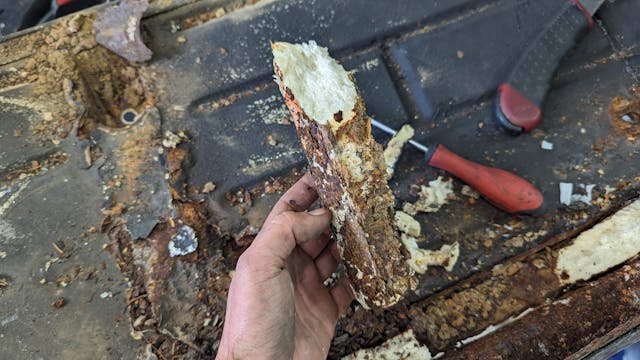

In hindsight, 2020 was the perfectly wrong right year to make promises or return favors. Maybe 2021? Nope, that wouldn’t be the 2CV’s year, either. In late 2021, as society carefully resumed moving after careening off its tracks, my own world went boom like the valves hitting the pistons when a timing belt decides to take its last spin. At 32, I found myself adapting to living alone for the first time since I was 20. In the months that followed, nearly every aspect of my life changed.
The small collection of classic cars that I had meticulously assembled since my early 20s—in some cases, I had waited for years to buy the right car—became an encumbrance. I didn’t have the time, the money, or the motivation to deal with any of it. At best, the cars were parked; at worst, they were sold.
Maybe it’s the other way around, actually. “Best” and “worst” are relative terms; I suppose the cars might argue it’s better to be sold than parked, if they could voice an opinion. They can’t, so you’ll have to take my word for it. Regardless, in 2022, I put fewer than 50 miles on my 1979 Mercedes-Benz 300D, fewer than 10 miles on my 1972 Volkswagen Beetle, and the 1972 Mini 850 franken-zombie departed to start its third afterlife somewhere in southwestern France. Three other cars also left my fleet. I don’t like selling cars—they always seem to end up in the wrong hands—but it felt good to offload some of the ones laced with fragments of my past that I wanted to catapult out of my mind.

One of the few things that remained was the 2CV. It was still there, a decaying monument to both Citroën’s genius and a life I’d long left behind, like one of those faded statues that you see in big cities of a random bald guy with a sick-looking pigeon shitting on his head. It was still parked under a tree (a cypress, this time), it still had four flat tires, and it still needed floors, rockers, and a frame to pass inspections. Hail had poked dozens of holes through the soft top, so that needed to be replaced as well, as did whatever else had managed to dry out, seize, rust, or otherwise fail from what was now about 10 years of not turning a wheel on a public road. And yet, the flat-twin engine still started. Sometimes I’d move it a few feet to mow and joke, “At least I’m keeping the mileage low.”
That’s not to say I had a plan to get the Citroën back on the road; I didn’t. For all I knew, and admittedly for all I cared, it could sit for another 10 years. Selling it wasn’t an option—the 2CV has a lot of sentimental value—but fixing it wasn’t on my radar. I had other things to worry about and far bigger problems to solve.

Life’s surprises aren’t always ugly. I randomly ran into the guy who runs the 2CV shop I’d contacted in 2020 while halfway through my third beer at a county fair-type event in a tiny village up in the mountains. I’d paid for the beers using the worn, blue plastic coins of a local “currency” created specifically for the event. The conversation turned to my car. Yes, I still have it; no, it hasn’t been fixed yet; sure, it’d be neat to get it going again sooner or later. He told me there were several cars ahead of mine in his restoration queue, but that he would pencil me in and reach out when its time came.
Suddenly, and unexpectedly, I had laid the foundations of a plan for the car. I also had a goal.
The length of the restoration queue wasn’t a surprise. It had taken me a while to connect the dots, but the shop’s owner, Felix Hoffmann, is the son of Wolfgang Hoffmann, the German coachbuilder who made a name for himself by turning 2CVs into full convertibles. The black and gray example that appeared on Jay Leno’s Garage? That’s the family business. Felix’s knowledge of 2CVs approaches the surreal. That his shop happens to be about 10 minutes away from my house in France is an inconceivable stroke of luck: I’m from Salt Lake City, Utah, and he’s from the Munich area.

When the call came, I had to figure out a way to take my 2CV to the shop. I’ve always kept it insured, but it wasn’t registered and I didn’t trust it to make the three-mile journey under its own power. Felix kindly offered to let me use his trailer, and I started looking for a tow vehicle … which I found in my garage. My trusty 300D has a hitch and aftermarket rear air springs; the elderly couple I bought it from in 2014 had used it to tow a camper in the 1990s. I didn’t like the idea of pulling such a heavy load with the Mercedes, but I didn’t have a choice, and the sedan didn’t miss a beat. It also made for one hell of a picture.

I started hanging out at the shop after work and on the weekends with Felix and Seb, a mutual friend who is also a walking encyclopedia on anything flat-twin-powered. I enjoyed spending time with like-minded enthusiasts and learning about 2CVs—I’ve forgotten more about these cars than most folks will ever know, but Felix and Seb are on another level. They’ve beat the game. They can pick a bolt off of an engine and recognize that it’s rare because it was only used from, say, July 1955 to January 1956.
On a cold, gray day in late December 2023, as everyone’s work was slowing down for the holidays, we decided to push my car into the shop. Teardown went quickly: The hood and the fenders came off first, then the headlights and the bar to which they’re attached, and finally the engine and the transmission, as one unit. I went back the following day and removed everything attached to the engine, such as the fan and its shroud, the alternator and its bracket, and the manifold. I spent hours cleaning over 40 years of sticky grime with a mix of brake cleaner and old gasoline.
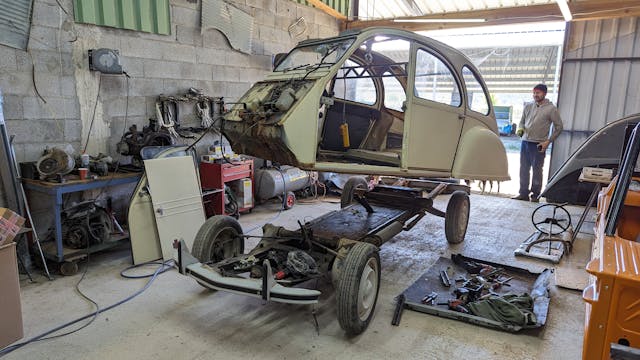
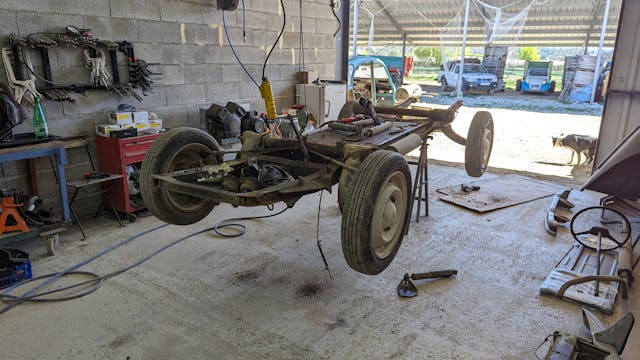
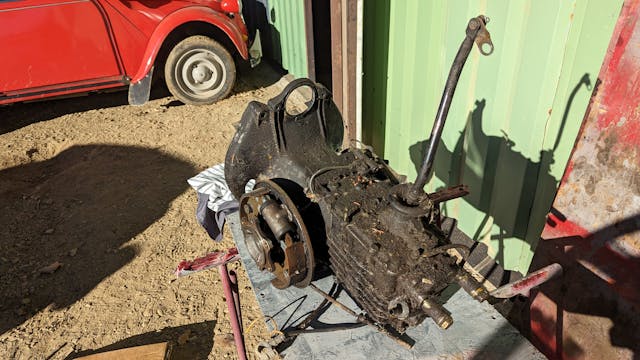

As I drove home, it dawned on me that I’d gotten more done on that car in two days than I had in 10 years—more than I’d gotten done on any car in over two years. The realization was eye-opening. It produced a strange feeling, too: this little engine hauled my ass around for years, and now I was hauling it around (to move it in and out of the shop, for example). I was finally returning the favor to my 2CV.
Cracking the engine open was fairly straightforward; it likely had never been apart. I’m pretty sure the last person who saw the teeny pistons I took out was the line worker who installed them in 1978.

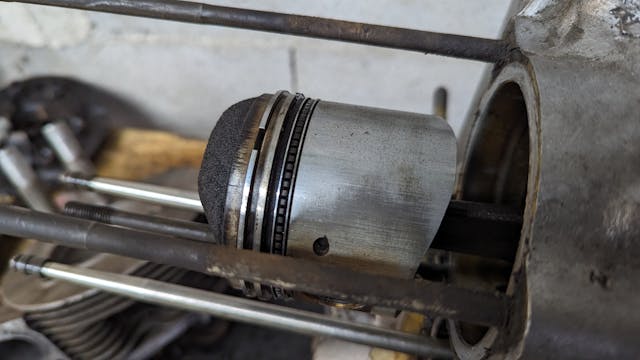
Once the flat-twin was in pieces, Felix and Seb confirmed what I suspected: the engine needed to be rebuilt. I knew this because when I drove the car daily it lacked power, even for a 435cc-powered 2CV, and it coughed out so much smoke that you’d think it had just elected a new pope. Maybe that’s precisely what it was trying to tell me, but the emissions people would disagree.
Working out of Felix’s shop helped motivate me to get the engine done in a timely manner. He was nice enough to let me take advantage of his space, his tools, and, crucially, his brain—I don’t want to hog a spot on his workbench for years on end. About two months after the engine came out, including the holiday break and a couple of weeks spent waiting for parts that got stuck in transit in a depot, I had the two-cylinder back together with new pistons, piston rings, cylinders, valves, and every last seal and gasket. The rebuild wasn’t finished, though. I fitted electronic ignition, replaced the flywheel (the old one was chipped), and Felix repaired a stripped thread on the passenger-side head.

As of writing, the engine is pretty much done. I need to reinstall the carburetor, the alternator, and the fan to call it a day. The car, however, is far from done.
The second part of the project started on a windy day in March 2024, when we took the body off the frame. I knew the rust was bad—the factory jack once stabbed a hole through the underbody while I changed a wheel—but it’s worse than I imagined. One of the previous owners riveted a big metal plate over the front floors, and I figured out why when I removed it: beyond the holes in the floor, most of which I could see from underneath, there is a colossal amount of rust on the inner part of the passenger-side rocker panel that was hidden by the plate. Puzzlingly, the space is filled with the kind of insulating, spray-foam sealant folks use in houses. “I can’t believe I used to drive this daily,” I thought as I took out chunks of hardened foam coated with rust. This car has the structural integrity of tofu. The suspension cylinders, a crucial part of the 2CV’s offbeat suspension design, are shot as well.
All of this can be fixed, however. I’m not making promises this time around, or even giving myself a timeline, but it’s coming along.




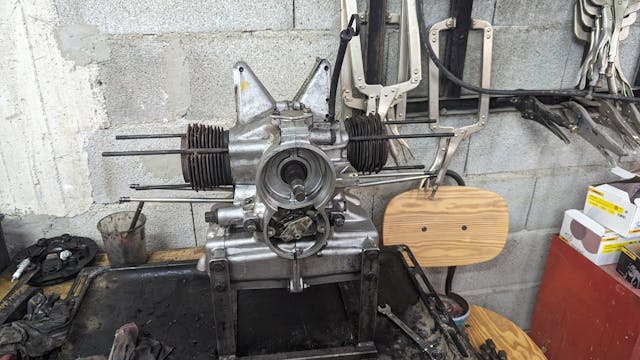
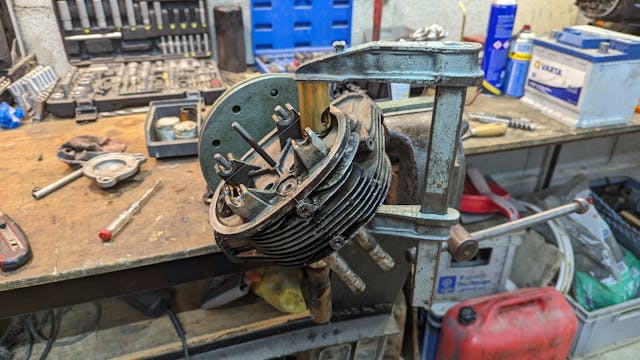
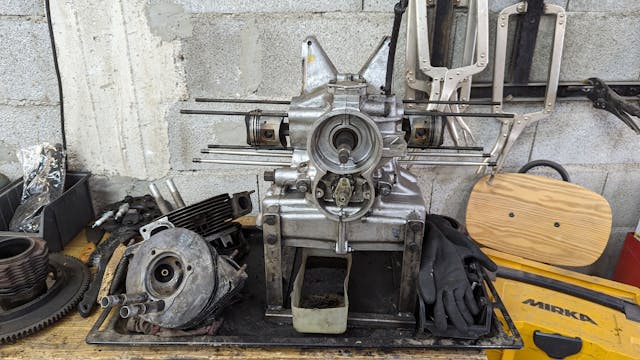
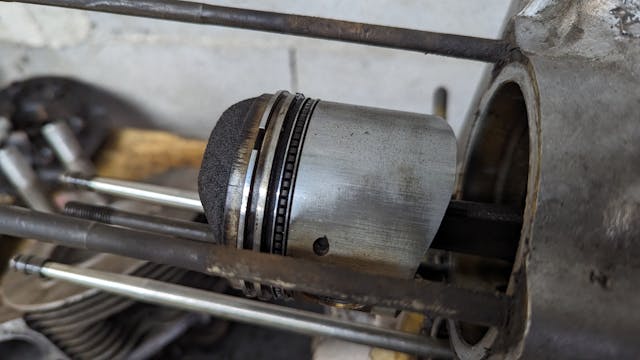


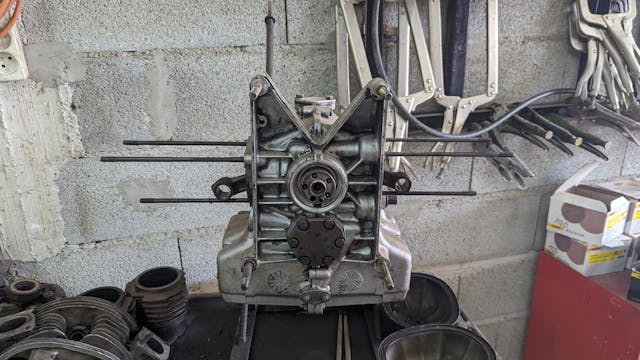
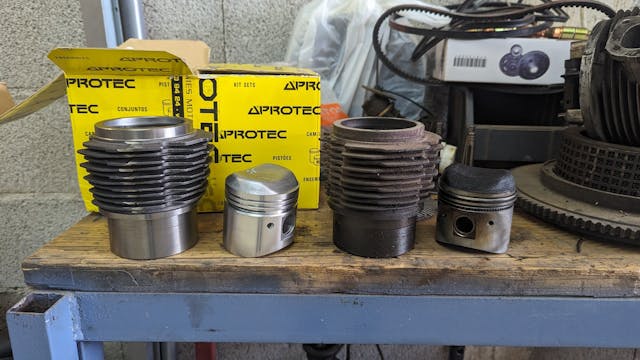
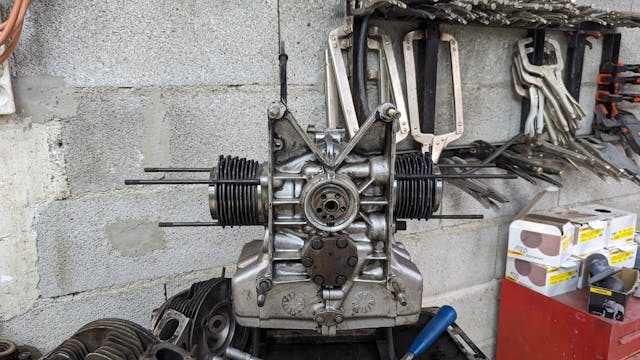

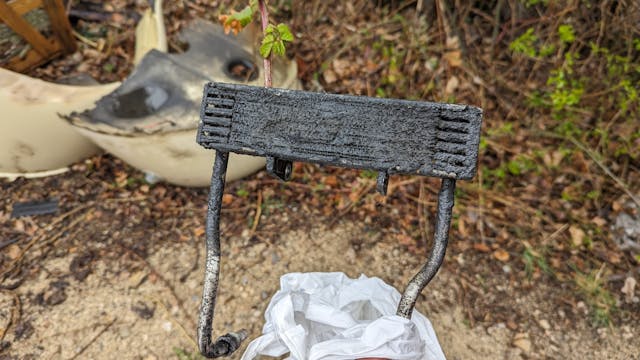

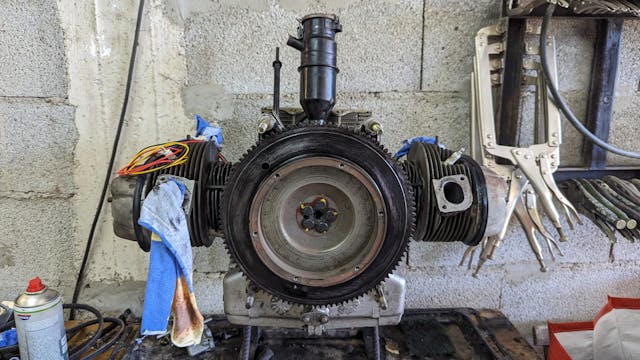
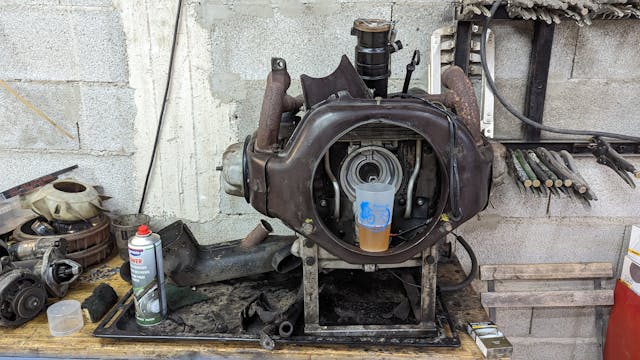
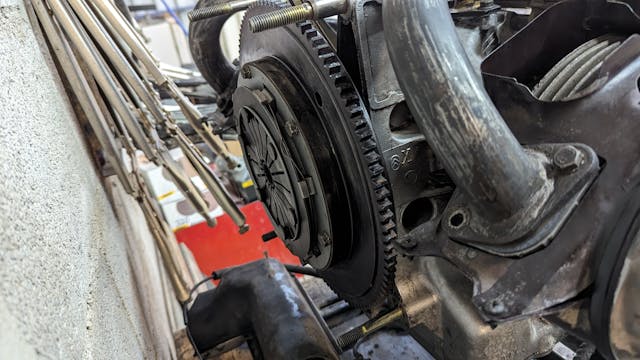
***
Check out the Hagerty Media homepage so you don’t miss a single story, or better yet, bookmark it. To get our best stories delivered right to your inbox, subscribe to our newsletters.
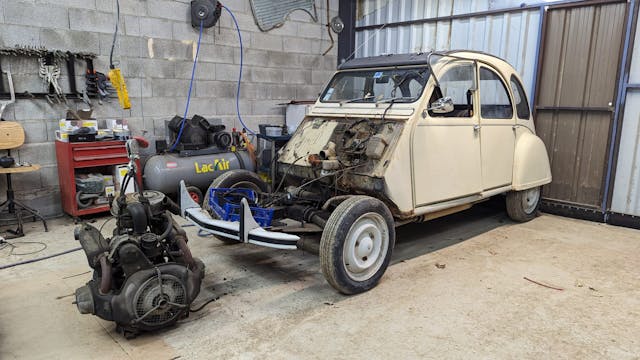


Great article and photos! I have always loved the 2CV and am hoping to own one in the near term future. Please post more articles as the restoration continues. Thanks again for the article.
Thanks! I’ll post another update soon.
Which version of the 2CV are you after?
Inspiring!
Ronan, hope everything works out for you and that things are now going well. Sounds like your are well invested in this little 2CV and you are staying busy. Was going through some old photos the other night and came across a number of pics where you had joined us (BMCU) when you were heading up the Italian Motor Club of Utah on one of our drives way back around 2008 or so. I believe you were driving an Alfa Giulia Sprint that day.
Time flies!!
Wow, small world! That was me, yep. I started and ran the Italian Motor Club of Utah. That was ages ago; I wasn’t even 20 at the time, ha. I loved the BMCU events, I attended your show at Pioneer Park every year when I still lived in SLC, and I remember the drive I joined with the red Sprint (which wasn’t mine; I borrowed it). I hope all is well.
This man has a problem. The same one I do. I have 7 two cylinder Citroens.
Ha, you make me look sane: I’ve only got two flat-twins (the other is an Ami 6). What’s in your fleet?
Cool to see progress on the car. Getting their slowly but surely.
Excellent article. Was my first car.1970 2 cv .in Argentina they call it ,3 cv
Wonderful article. I had a similar experience in the building of the wings of my Kitfox experimental airplane. I knew that I did not have the skills to build the jigs, much less the wings, but I found a Kitfox build shop only a hundred miles away. I trailered the parts there and the nearly-completed wings back three weeks later, and I doubt that I could have built them in three months on my own. Money very well-spent. I very much look forward to your next installment.
It’s amazing the progress that happens when you have a melding of like minds and the shop to get er done.
And cold beers…